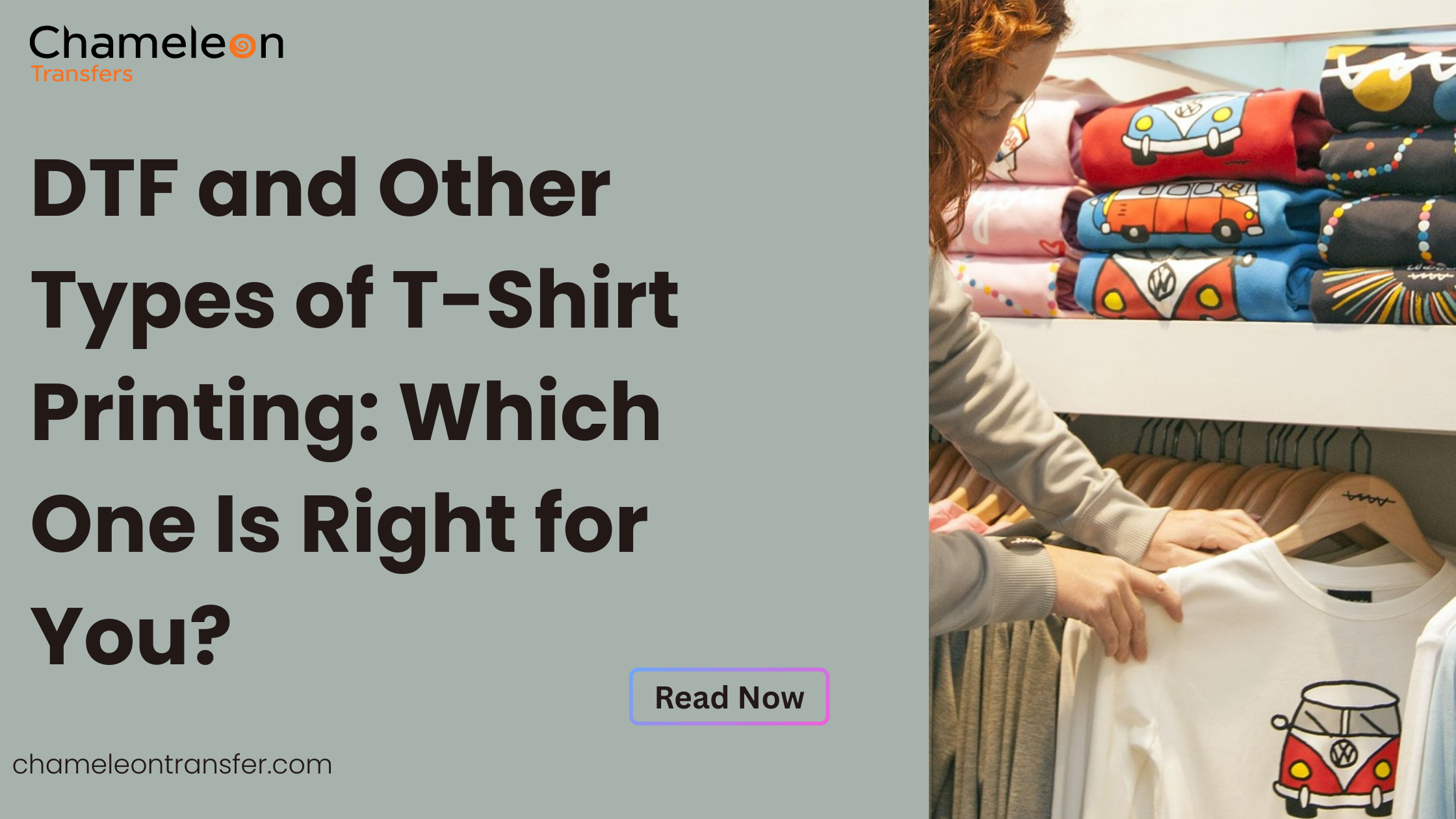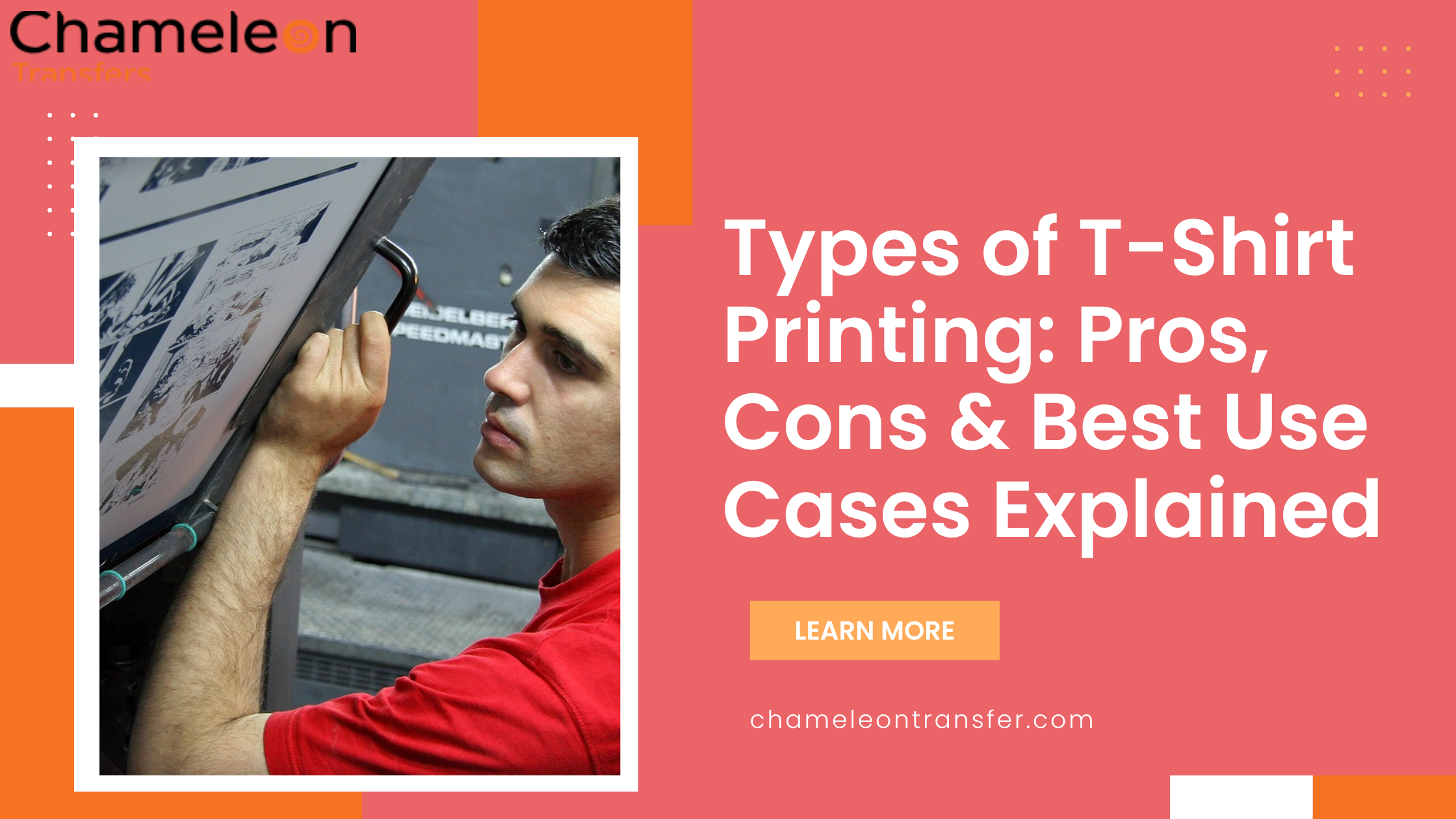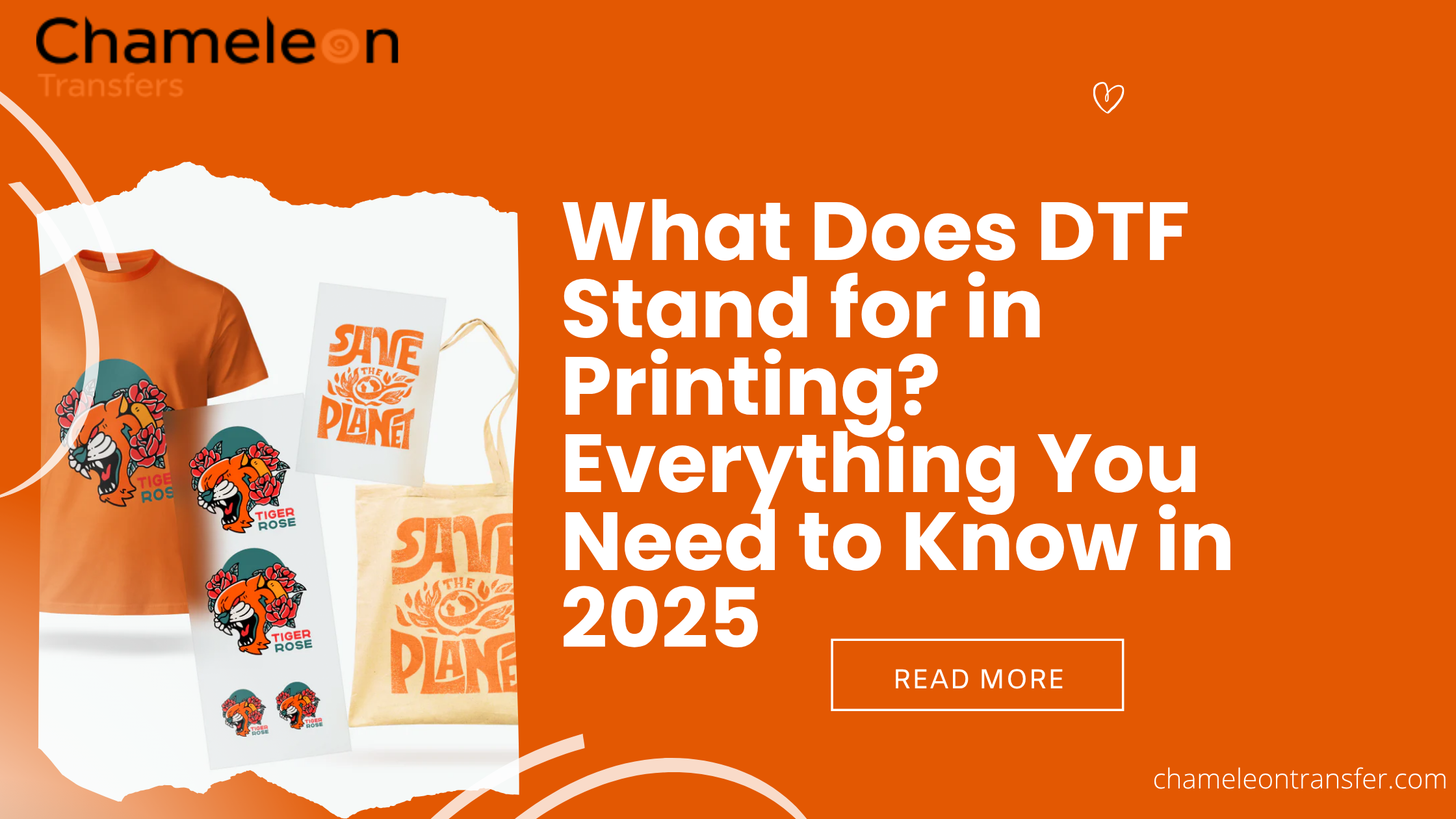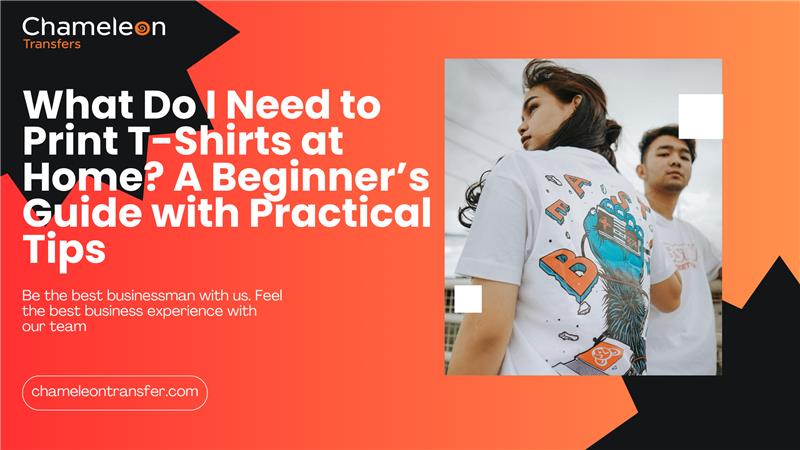In the world of custom t-shirt printing, selecting the right method can transform your vision into reality, whether you're aiming for vibrant graphics on t-shirt or durable designs that last. With a variety of types of printing t-shirts available, from traditional screen printing t-shirts to innovative direct-to-garment (DTG) printing, each technique offers unique benefits tailored to different needs.
This comprehensive guide explores the most popular kinds of shirt printing, detailing their processes, advantages, drawbacks, and ideal applications. Whether you're seeking t-shirt printing for events or high-quality t-shirt printing for a premium brand, understanding these different types of t-shirt printing will help you make an informed choice.
We'll cover everything from bulk t-shirt printing methods to small batch customization, ensuring you find the best print on t-shirt for your project.
Screen Printing: The Classic Choice for Bulk Orders
Screen printing t-shirts remains a cornerstone of t-shirt printing, known for its reliability and durability. This method uses a stencil, or screen, for each color in the design. Ink is pushed through the mesh onto the fabric with a squeegee, building the image layer by layer, then cured with heat for permanence.
Pros: Incredibly durable, lasting over 100 washes, making it a top choice for long-lasting print methods. It delivers vibrant, opaque colors, especially on dark fabrics, and is cost-effective for large quantity t-shirt printing. Once screens are set up, production is fast.
Cons: Complex designs with multiple colors require separate screens, increasing setup costs. It’s less ideal for small batches or one-off customizations, and print areas are typically limited to the chest or back.
Best Use Cases: Perfect for promotional events, team uniforms, or merchandise lines needing bulk t-shirt printing methods. For 50+ identical shirts with bold graphics on t-shirt, it’s often the affordable t-shirt printing method for volume. Setup costs are high, but per-unit costs drop significantly in bulk, ideal for t-shirt printing service efficiency.
Direct-to-Garment (DTG) Printing: Perfect for Detailed Designs
Direct-to-garment (DTG) printing is a modern favorite for high-quality t-shirt printing, especially for intricate designs. It works like an inkjet printer, spraying water-based inks onto pretreated fabric, which absorbs for a soft feel, then cured with a heat press.
Pros: Unlimited color options and photorealistic quality make it ideal for custom-printed t-shirts with gradients or photos. No screens mean quick setup, and it’s a leader in eco-friendly t-shirt printing due to minimal waste. The print feels seamless without thick ink buildup.
Cons: Best on cotton shirts or blends; it struggles on synthetics like polyester. Durability is decent (around 50 washes with care), but fades faster than screen printing. It’s slower for large runs, and dark fabrics need pretreatment for vibrant colors.
Best Use Cases: Small batches or print t-shirts online orders, like personalized gifts or niche apparel. For what’s the best t-shirt printing method for small batches, DTG excels in custom t-shirt printing near me or e-commerce startups. Costs are moderate, with low setup but higher per-unit prices for volume.
Dye Sublimation: Ideal for All-Over Vibrant Prints

Sublimation t-shirt printing turns designs into gas under heat, infusing them into fabric fibers. The design is printed on special paper, then transferred to the shirt via a heat press, bonding permanently.
Pros: Prints are fade-proof, durable, and feel like part of the fabric with no texture. It’s unmatched for all-over printing and brightest colors, covering seams and edges. This method shines in trendy t-shirt printing techniques for patterns or full clothes with prints.
Cons: Only works on light-colored polyester t-shirts or high-poly blends. Does sublimation work on cotton shirts? Not effectively. Dark fabrics yield muted results, and specialized materials raise costs.
Best Use Cases: Athletic wear, fashion lines, or custom t-shirt printing methods for vibrant prints for t-shirt designs. It’s great for small runs, prioritizing quality. Costs are higher but justified for premium products.
Direct-to-Film (DTF) Printing: Versatile for Any Fabric
The DTF print t-shirt is a rising star among types of printing on shirts. Designs are printed onto a film with special inks, coated with adhesive powder, cured, and heat-pressed onto the garment.
Pros: Highly versatile, working on cotton, polyester, blends, and even non-fabrics. Colors are vibrant with strong contrast, and no pretreatment is needed, unlike DTG. Prints resist cracking over time.
Cons: Slightly plasticky feel compared to softer methods, and better for smaller designs than all-over. The multi-step process can slow production slightly.
Best Use Cases: Medium orders with bright, detailed prints for t-shirt designs, like streetwear or promotional items. It’s the strongest and best printing method for polyester t-shirts or mixed fabrics. Mid-range costs suit fast-printed t-shirts.
Read more blog: How to Remove Print from a T-Shirt: A Step-by-Step Guide
Plastisol Transfers: Convenient for Customization
Heat transfer printing with plastisol involves screen-printing designs onto transfer paper with plastisol ink, then heat-pressing them onto shirts.
Pros: Durable and versatile, with glossy or textured finishes. Transfers can be stored for same-day t-shirt printing, ideal for adding custom elements like names.
Cons: Not suited for photorealistic images, and the feel can be thick. Each transfer adds cost, less efficient for massive volumes.
Best Use Cases: Team uniforms or promotional t-shirts in small-to-medium quantities. Great for same-day t-shirt printing near me due to quick application. Costs are low for bulk transfers but include paper expenses.
CAD Heat Transfer Vinyl: Bold and Professional
Vinyl printing for t-shirts uses a cutter to shape vinyl sheets, which are heat-pressed onto fabric for a raised, matte, or glossy finish.
Pros: Crisp edges, works on any fabric, and is durable for heavy use. Ideal for solid colors and text.
Cons: Limited to simple designs, no gradients or photos. It can feel stiff, and weeding out small details is time-consuming.
Best Use Cases: Sports jerseys or work uniforms with logos. For difference between screen printing and vinyl, vinyl is quicker for small runs. Affordable for low volumes.
Embroidery: Premium Texture Beyond Printing

While not a printing method, embroidery vs printing on shirts is a common comparison. It stitches designs with thread using a machine guided by digital files.
Pros: Extremely durable, professional, and textured, with an eco-friendly edge (no inks). How durable is embroidery compared to printing? It often outlasts prints.
Cons: Expensive, slow, and unsuited for complex images or large areas.
Best Use Cases: Corporate branding or monograms on polos or good-quality t-shirts for printing. Higher costs reflect the premium feel.
Discharge Printing: Vintage Softness on Dark Fabrics
Discharge printing uses ink to remove dye from dark fabrics, creating a bleached effect, optionally recolored.
Pros: Super soft, no thick layers, and highly durable without peeling, perfect for the quality of t-shirt prints.
Cons: Colors can be unpredictable, limited to cotton, and involve chemicals.
Best Use Cases: Vintage-style prints on dark shirts for medium orders. Moderate costs for specialized work.
Conclusion
Selecting the ideal type of shirt printing hinges on your project’s scope, fabric, and design goals. For bulk t-shirt printing methods, screen printing offers unmatched economy and durability. DTG printing excels for detailed, small-batch customizations, while sublimation delivers vibrant all-over designs on polyester. DTF provides versatility across fabrics, and vinyl or plastisol transfers suit quick, bold prints.
For a premium touch, embroidery stands out, and discharge creates soft, vintage looks. Each method balances the cost of t-shirt printing types, durability, and aesthetic, so align your choice with your vision, whether it’s local t-shirt printing, print on demand, or custom t-shirt printing.
Ready to bring your designs to life? Chameleon Transfers offers top-tier t-shirt printing solutions tailored to your needs, from high-quality t-shirt printing to fast printed t-shirts. Visit Chameleon Transfers to explore custom t-shirt printing methods and start creating today!
FAQs
Q1. Which type of t-shirt printing is best?
The best varies, screen printing for bulk durability, DTG for detailed small batches.
Q2. What is the most efficient method of t-shirt printing?
Screen printing is fastest for large quantity t-shirt printing post-setup.
Q3. What are the 8 types of printing methods?
Screen, DTG, sublimation, DTF, plastisol transfers, vinyl, embroidery, discharge.
Q4. What's better, screen print or DTG?
Screen print for longevity and bulk; DTG for complex, small-run custom print t-shirts.
Q5. What type of t-shirt printing lasts the longest?
Sublimation and embroidery are among the most durable, bonding deeply with fabrics.
Q6. How many types of t-shirt printing?
Eight are commonly used, with variations for specific needs.
Q7. What are the different types of printing on t-shirts?
From screen printing to discharge, each suits unique applications like bulk vs custom t-shirt printing methods.
Read more related blog:

DTF and Other Types of T-Shirt Printing: Which One Is Right for You?







